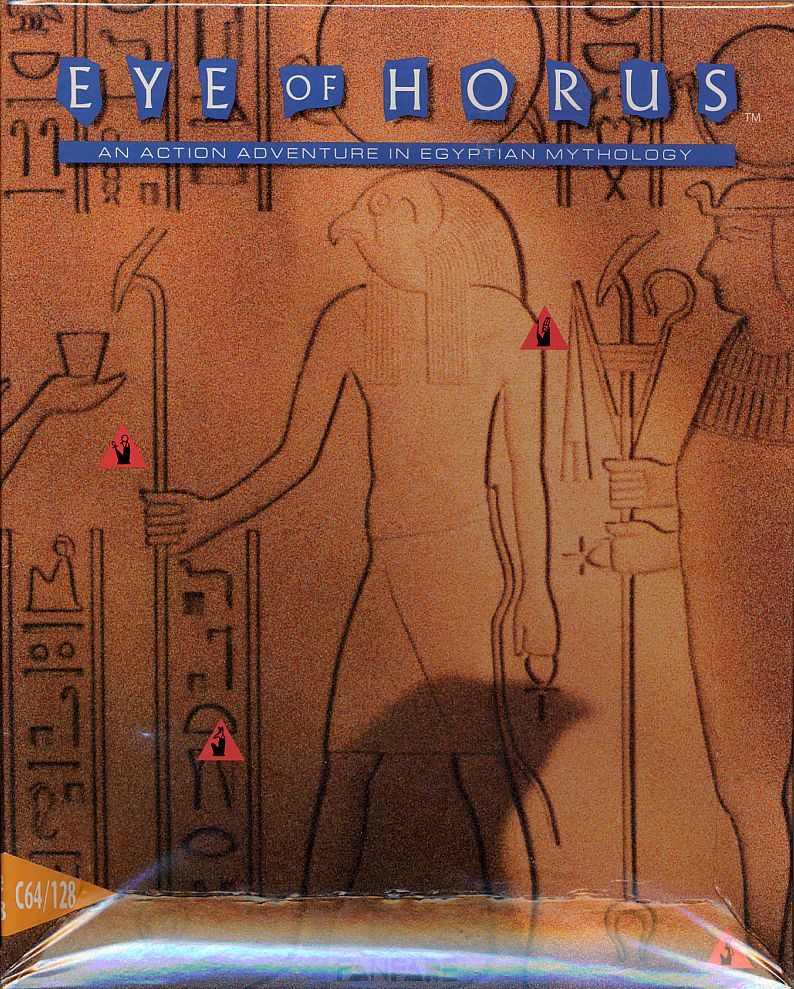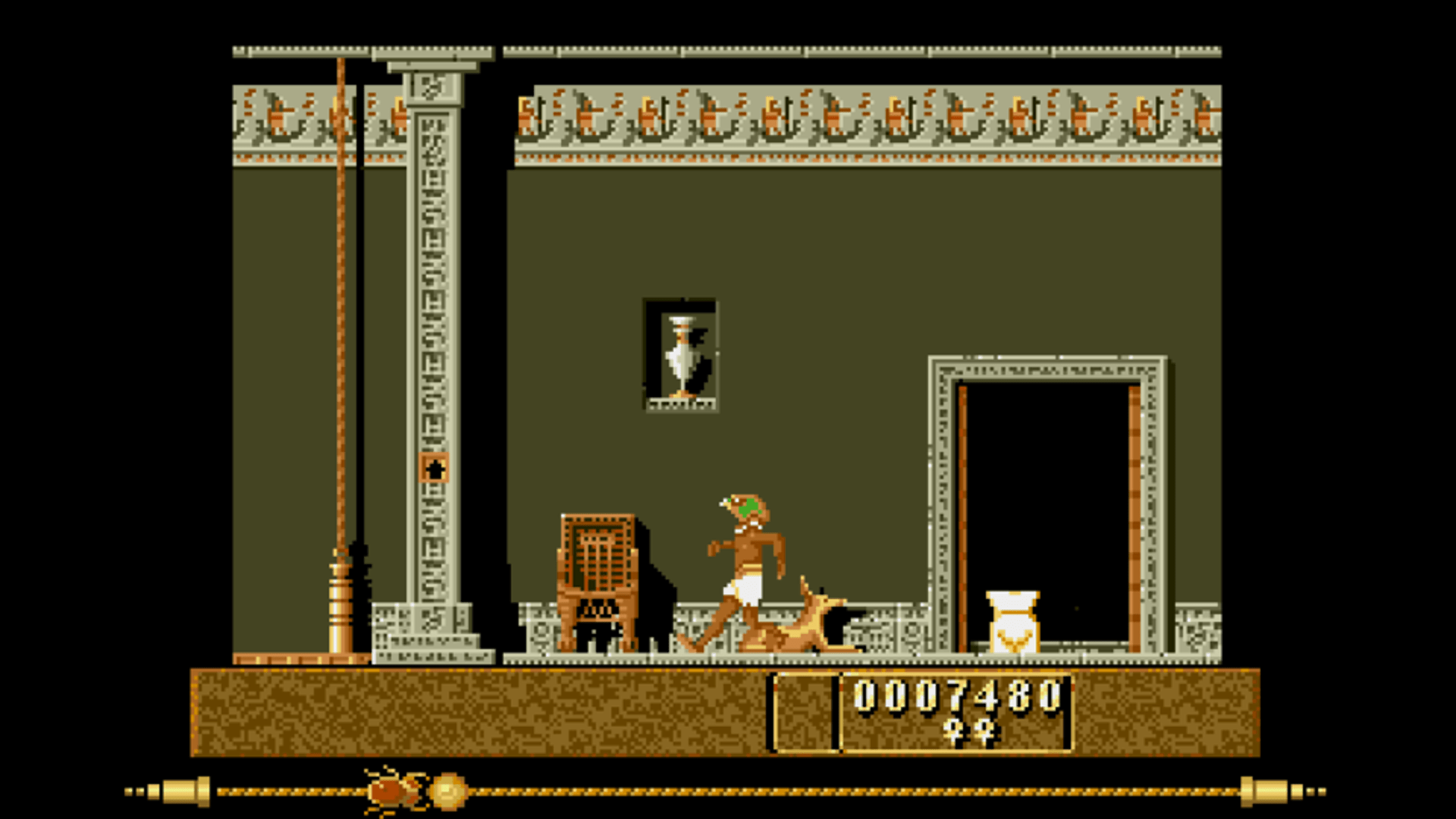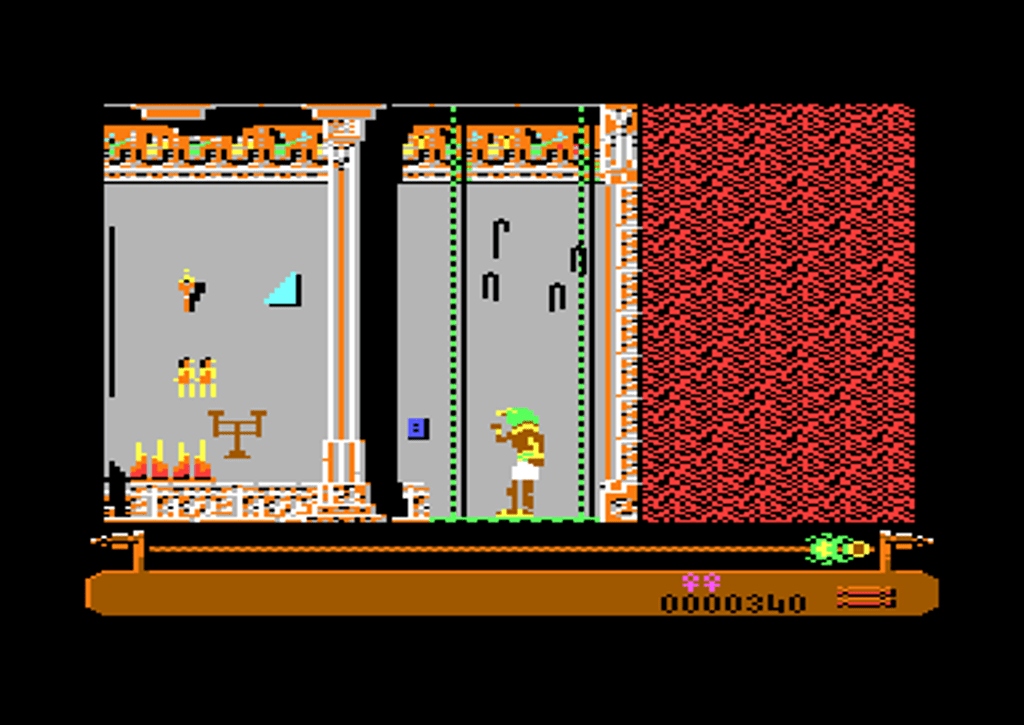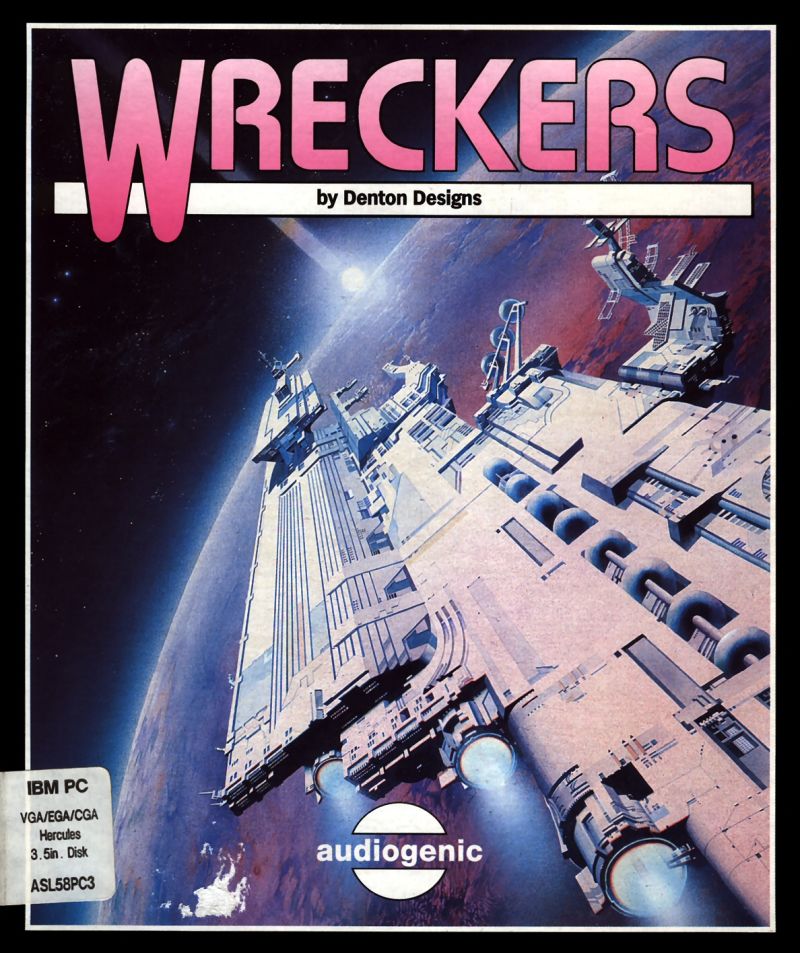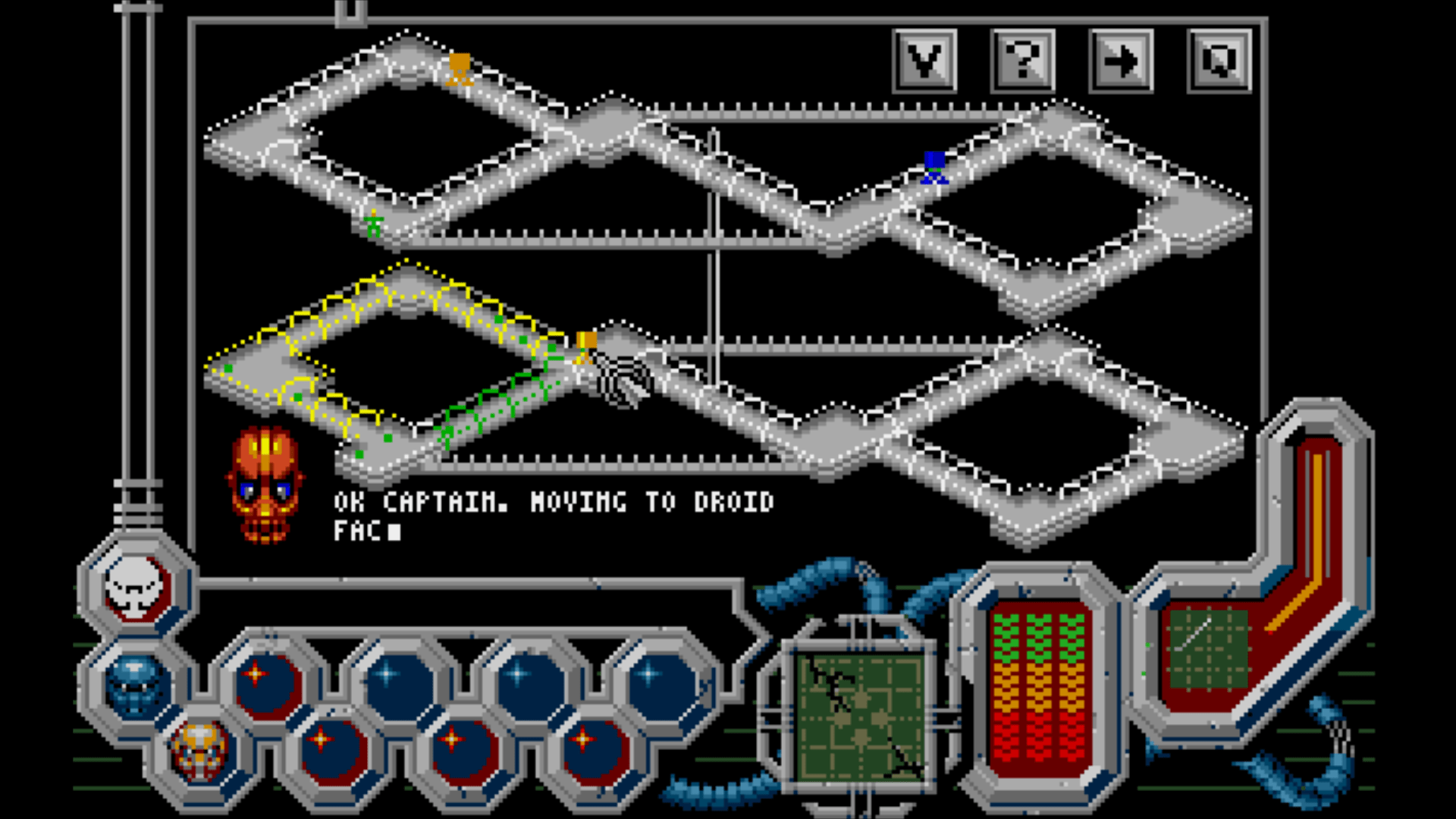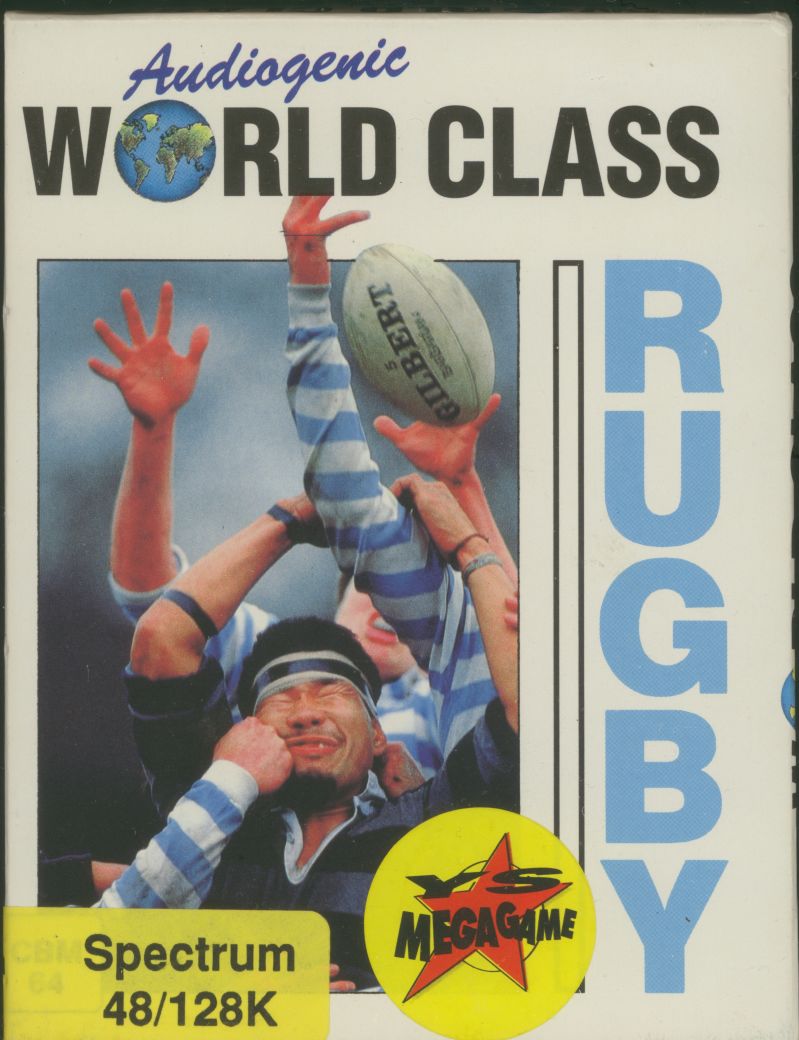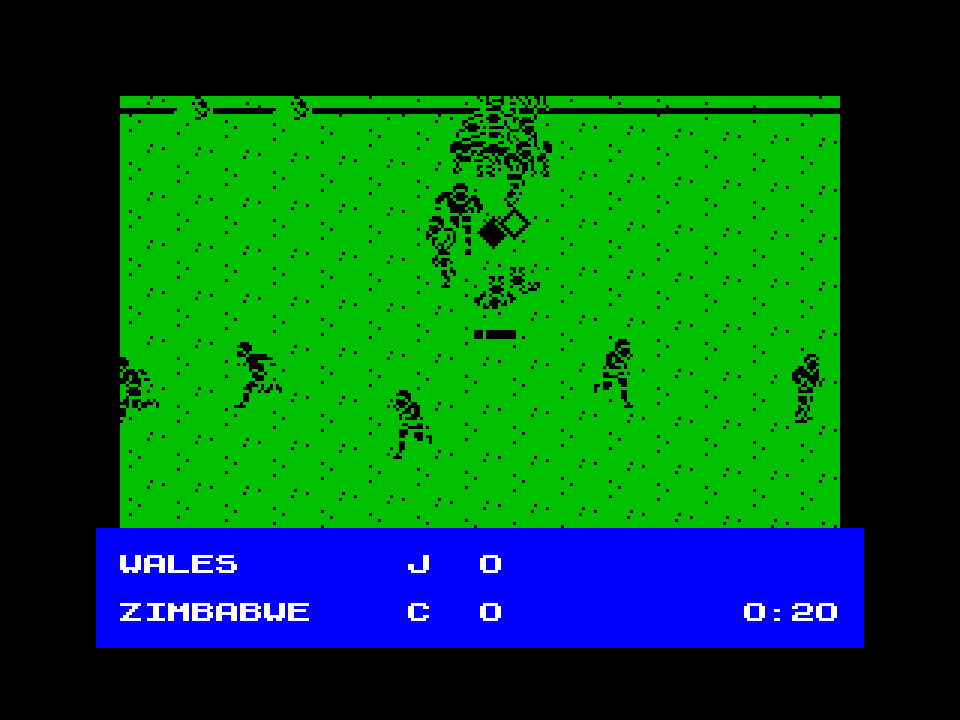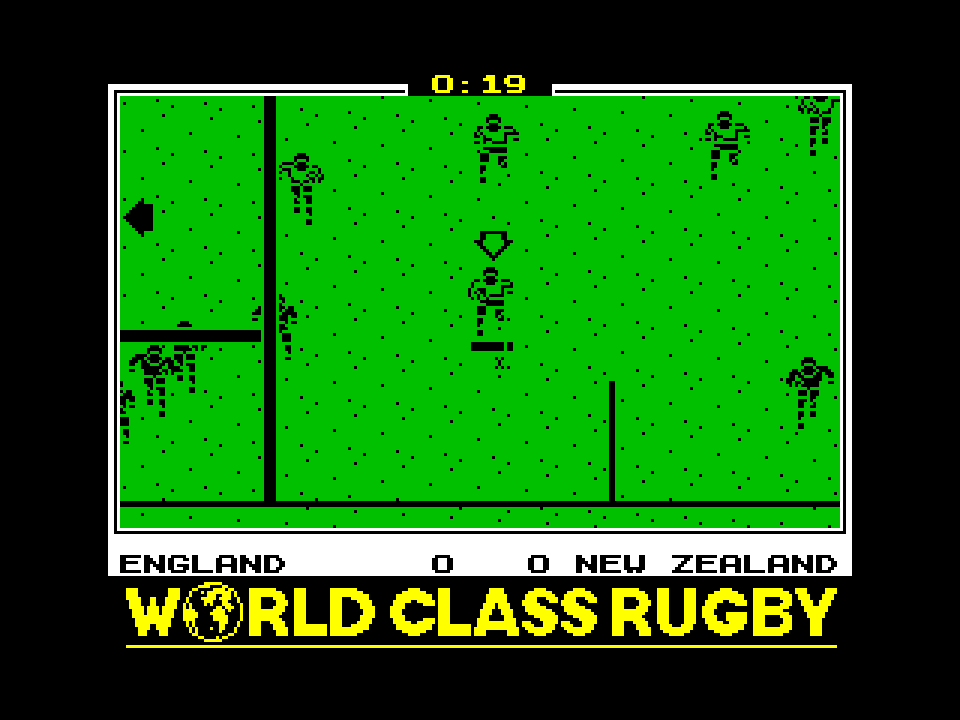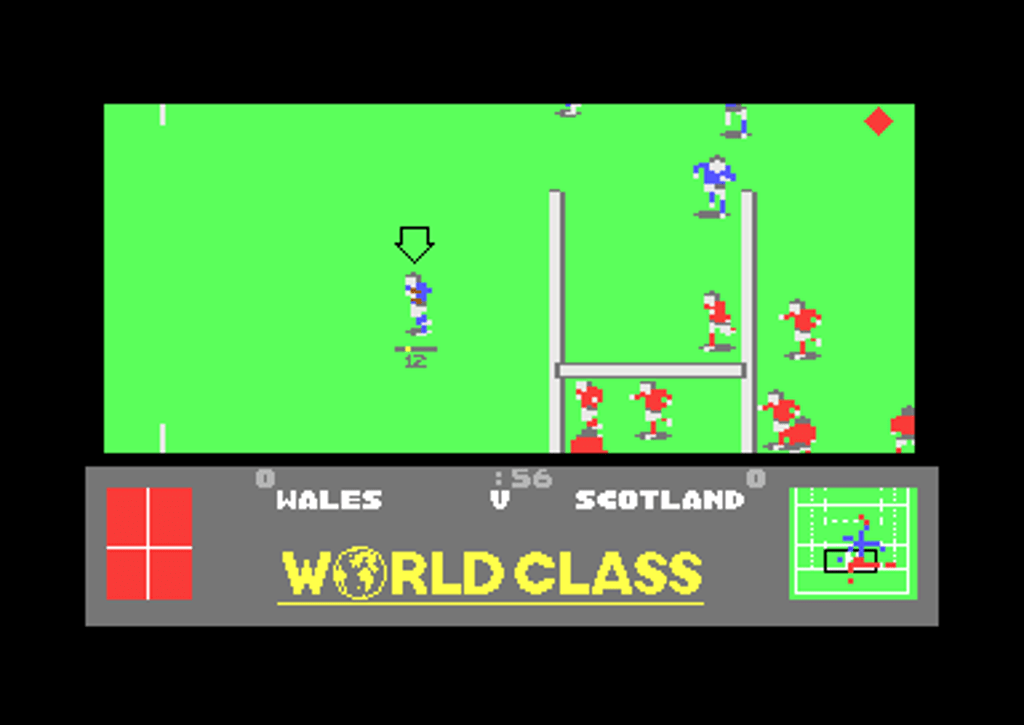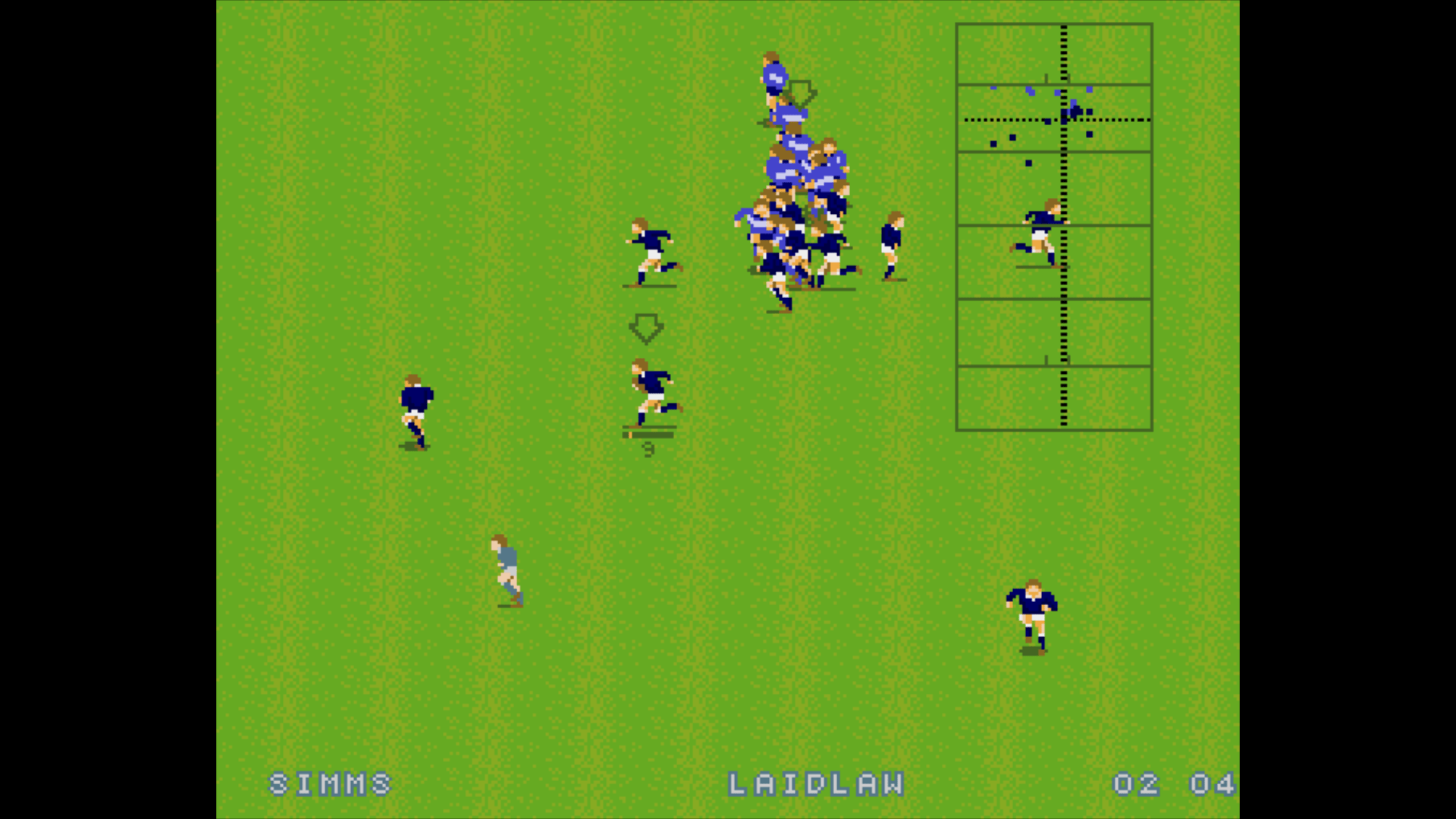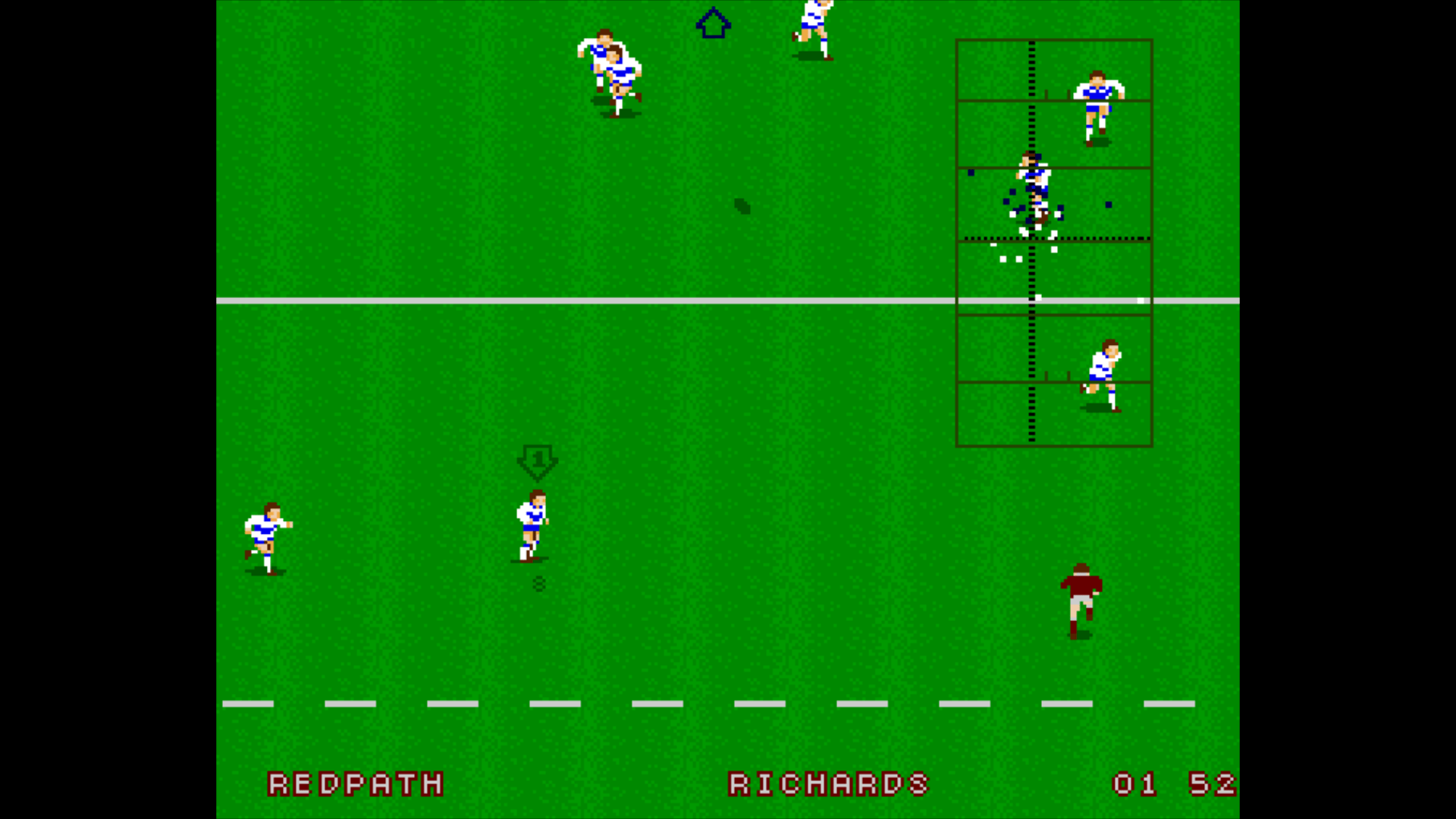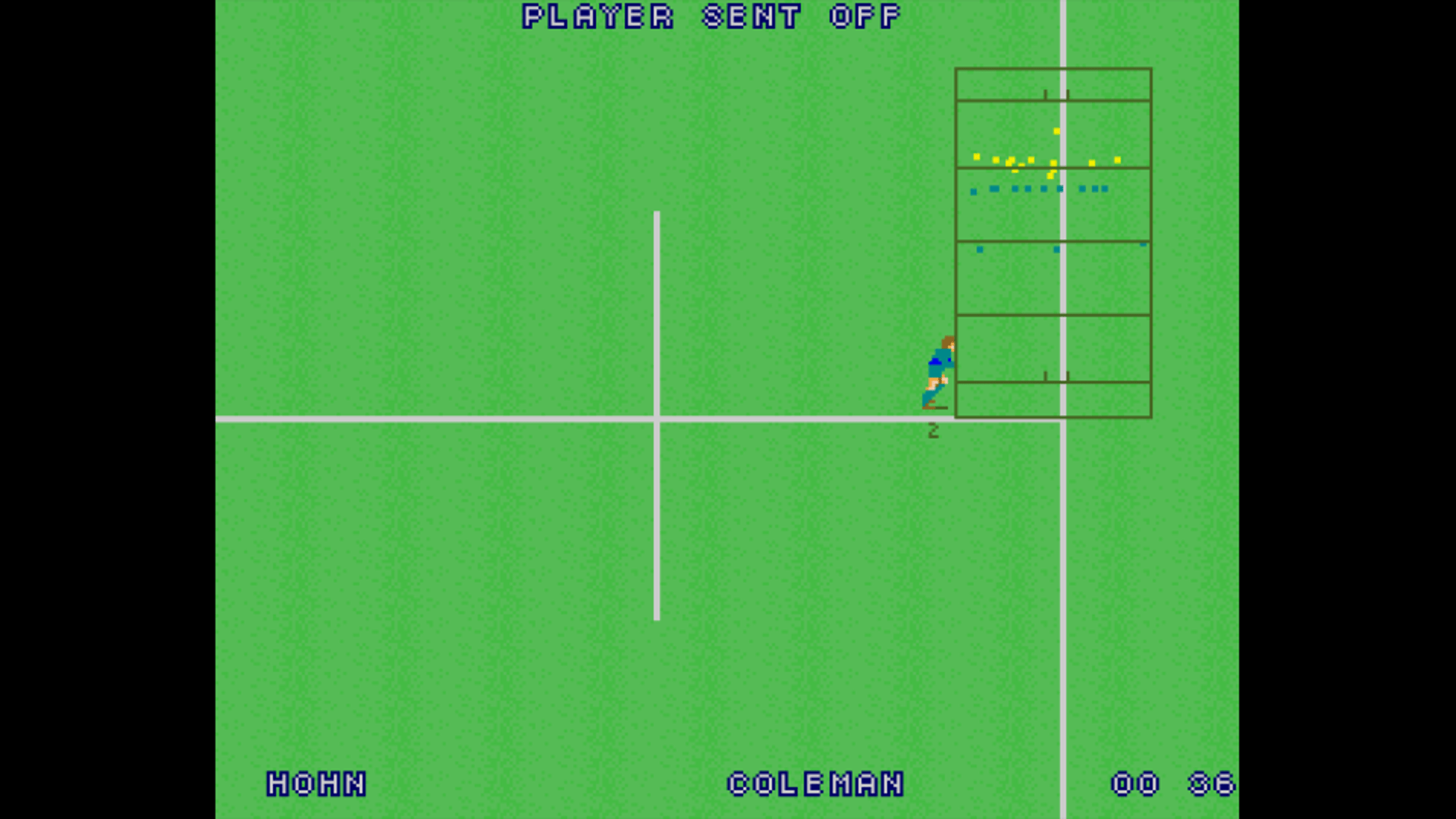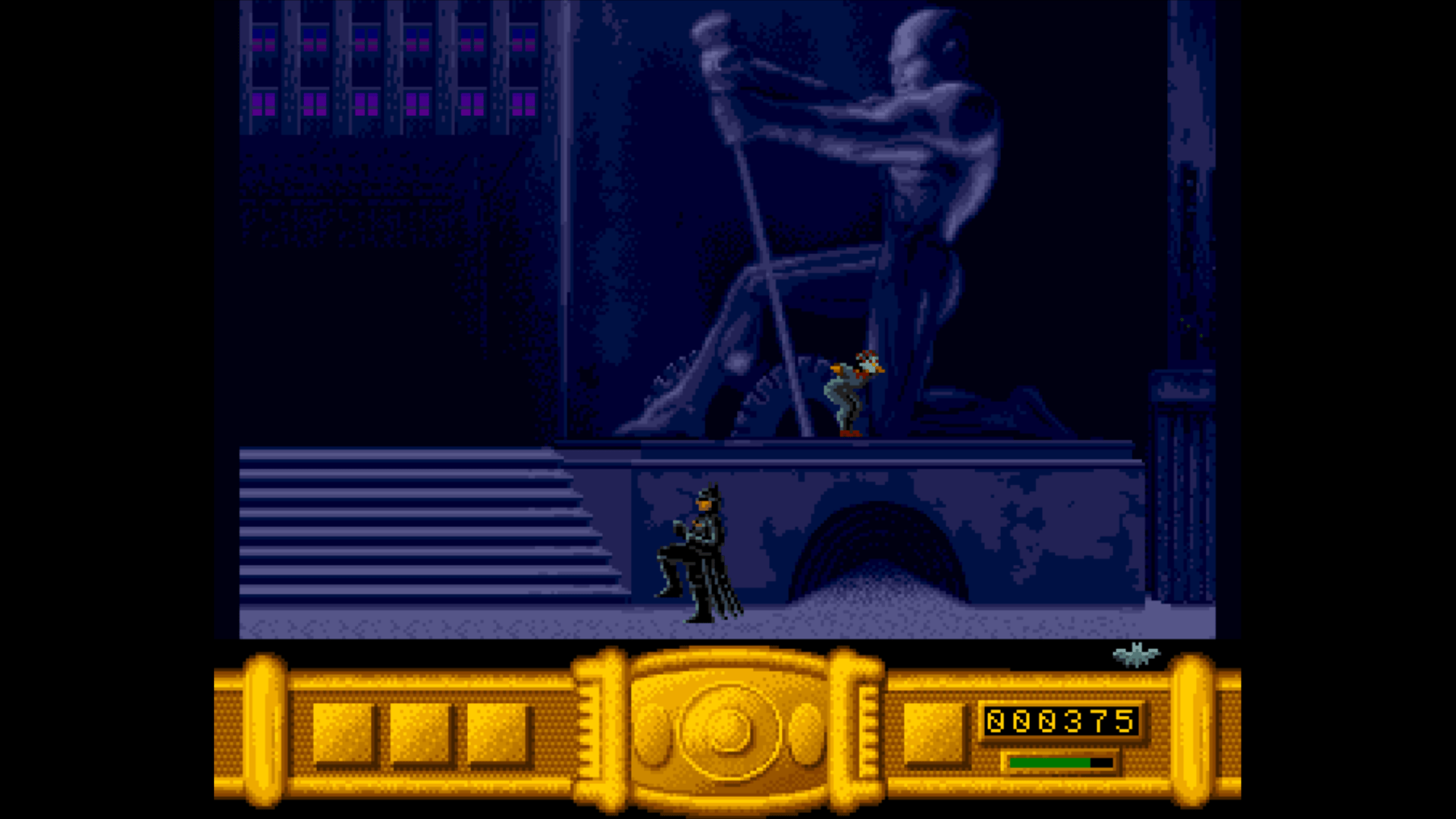Art For The Machines: Part VII – Burn Out Or Fade Away?
Eye Of Horus (Logotron) – To avoid some chronological confusion – Eye Of Horus actually came out before Zzap! 64 published Starace and right after Your Sinclair published Flashpoint. With the main difference being that Eye Of Horus was commercially released. As no other publisher was around to pick it up, the choice fell on Logotron Entertainment. You might remember them for such games as XOR, StarRay, Stargoose Warrior, Starblaze, Bad Company, Archipelagos, or Cloud Kingdoms? No? Well, that’s too bad, because that’s almost all of them…
Anyway. It goes without saying that Eye Of Horus was one of Logotron’s finer games. One of the box cover artworks for the game depicts– Damn! Torik?! Is that you…?! Unfortunately, it’s not – That bird-human would be known as Horus. But fortunately, this is another arcade adventure game from the Dentons and it’s based on some good old mythology – And what older and better is there than Egyptian one after you “already” have dealt with Greek one…? And it’s not a big surprise that Eye Of Horus is well researched, just like the certain masterpiece that everything begun with – In 1984. And the game isn’t that many fractions of a light year away from Gift From The Gods in terms of gameplay.
King Osiris was an all round good guy with legions of fans. But his half-brother Set wasn’t one of them. In fact, he hated him so much that he bullshitted him into checking if a “grown ass man fits in his new air-tight chest”. (Probably not his exact words according to the stories.) Osiris did so, and Set slammed the lid shut and nailed it even more shut. Osiris then had to take an exceptionally unwanted ride down the Nile as the air was running out… Fortunately, Osiris’ waifu Isis found him in the last minute. Flash forward a couple of years when Osiris and Isis has had a son called Horus. Horus never got to meet his dad, and Set who also figured out where Osiris was buried, desecrated the grave. And if you want to do something, you might as well do it properly – The corpse ended up in seven pieces all over the tomb. That shit doesn’t fly. And Osiris’ soul won’t find real rest until the body is back in one piece again. This is where you, Horus himself, come in. What else is a future sun God and the architect of the entire heaven supposed to do?
In this four-way scrolling arcade adventure, you both run and fly around the tomb, ride elevators, and look for keys, amulets, and the limbs and torso of Osiris. In the form of an Ave sapiens, you are a muscular dude with a falcon’s head. And you can shape-shift into a proper falcon and fly around the chambers. (But obviously, a falcon can’t operate elevators, pick up amulets, or assemble corpses. For this, you have to shape-shift back to humanoid form.) And when you find a body part, it has to be brought back to the entrance of the burial chamber. (Where the body materializes one piece at a time.) Different keys unlock elevators to the otherwise unreachable parts of the tomb, and logically, there are seven sections. (This means that several keys have to be found.) Despite all the characteristics of an Egyptian tomb, it’s the groups of many different hieroglyphs that attempt to kill you in this place. As soon as you appear in a room, the figures come alive on the walls and dart after you. You can shoot them, but they re-spawn infinitely. (But your score won’t increase infinitely even if you stand still and blast thousands them to atoms – Only one attack wave counts.) Colliding with the heat-seeking shapes drains energy. (Which is displayed as a horizontally moving Scarab at the bottom of the screen. When it has moved all the way from right to left, Horus loses one of his three lives.)
Horus has a seven-item inventory placed between the power-bar and the playing area. (And on the left side of the score- and life counter. In the C64-version, the power-bar and the inventory / score-life counter have switched places.) In total, there are nineteen different amulets for Horus to find: Buckle, Collar Of Gold, Eye Of Horus, Frog, Heart, Ladder, Menat, Nefer, Papyrus Scepter, Pillow, Sam, Scarab, Serpent’s Head, Shen, Soul, Steps, Tet, Vulture, and Two Fingers. These have quite different characteristics. For example, the Amulet Of The Frog gives Horus an extra life (Represented by Ankh-symbols.), and the Amulet Of The Papyrus Scepters “turns light, water, and dung to Papyrus”. You just never know when you need it. The Tet amulet is used to piece together Osiris when you have brought the entire body together. Only then can you fight Set in a final showdown. The game’s auto-map feature isn’t activated until you find and use the Amulet Of The Steps. (The map icon appears on the ride side of the score- and life counter.) Etc.
All of the amulets can’t be used at any time, but when Horus can wield some of their powers, they are readily accessed by pushing down on the Joystick and pressing the Fire-button. This lets you select an amulet. It can be activated with another press of the Fire-button. When Osiris runs left or right, he can shoot projectiles from his hands. Pushing the Joystick up turns him into the bird. The bird has Auto-fire, and when he’s close to the ground, he metamorphoses back to falcon-head man again. Holding the Fire pressed while flying lets you shoot and fly close to the ground without shape-shifting. But to make a 180 in the air, you need to release Fire and push the Joystick in the opposite direction. Activating an elevator is the only (?) way to stop the hieroglyphs from attacking.
Eye Of Horus looks really good on both platforms – The Amiga-visuals have all these extra details over the C64 one, but the latter runs a lot smoother and faster. It’s also quite a bit more difficult due to the mercilessness of the many energy-draining elements. The animations are excellent, and so is the soundtrack. Fred Gray and David Whittaker respectively made sure that the game on both machines isn’t without a couple of good and suitable tunes. The whole concept around the game is both original and fascinating. Sure, it was more or less impossible to invent an entirely new sub-genre in 1989, but once again: It’s in the details. The art. Denton Designs still had it. And one game from the Dentons for Commodore’s machines every year is infinitely better than no game at all. — Release: Winter / Late (December) 1989 · Credits: (C64) Fred Gray, Colin Grunes, Ed Knight, Ally Noble, Paul Salmon, Paul Tweddell / (Amiga) Dave Colclough, Colin Grunes, Ed Knight, Ally Noble, Paul Salmon, David Whittaker · Commodore 64 (Cassette / Disk) / Commodore Amiga (Disk)
Note: I tested a couple of disk images of the Amiga-versions, and most of them only worked on Amiga 1000 configurations and / or Workbench 1.2.
Eye Of Horus was also ported for the Atari ST and MS-DOS.
Wreckers (Audiogenic Software Ltd.) – It was time… To raise the standards for games that blended varied action with sweat-inducing, tactical gameplay. It was more a feeling than anything else, but a couple of the games under the same umbrella (“Isometric shooters”) were occasionally getting less and less intriguing while beginning to show signs of lacking the good old quality. And it’s hard to put the finger on a feeling… But the Dentons got one of their final opportunities to shine and show that they always were a couple of notches above, well, most game designers across the platforms.
It’s so extremely easy to state the obvious here, but there were always some games that were about that extra Extra. And in the tiny handful of Denton’s games that didn’t have as many visual touches as the other games (Details that “many others” wouldn’t have bothered putting greater efforts into.), there were, invariably, gameplay mechanics designed or utilized in an original way. And Wreckers has exactly all of that. Plus loads more…
Wreckers (Coded by John Heap and designed by Ally Noble.) was another game exclusively developed for the Spectrum 128K, and this delicate mix of more or less panicked blasting, robot maintenance, and planning under pressure was in production for at least two years – Pretty much since Where Time Stood Still was released in 1988… So one could only imagine how far such a game pushed the old Speccy… And…
… It was never published…
Even if Wreckers was fully reviewed in the May 1991 issue (#88) of CRASH (Where it got a really good rating and everything!), Audiogenic Software pulled the plug on it for some reason… And the Speccy itself was merely one year from discontinuation. But what’s even more annoying and extremely so though is that the Spectrum-version isn’t preserved anywhere. So… Is it really forever lost? (We can only hope that someone finds it in some basement / attic / storage room and does the right thing… For the art!)
But luckily for some back then and everybody who cares today, the 16-bit versions got published. John Heap coded the Amiga-version too as he knew the Spectrum-version inside out. The graphics were done by “Eye Of Horus”-artist Paul Salmon with the help from Herman Serrano. (Who has closer to thirty credits for various Amiga-games.) And sure – Wreckers does immediately come off as a game that benefits from those extra hardware bits. But the fact remains: There are pretty advanced games that play equally well on both generations of hardware. (Space Crusade is a very good example.)
Wreckers starts literally on a strong note with an exceptional and atmospheric main theme written by none other than Warren Cann from Ultravox. (David Whittaker did some additional music and the sound effects.) The single image intro cut-scene following the title screen welcomes you to Beacon 04523N – An outpost in space… And it’s going to be a really, really bad day…
First, you select which “Keeper” (Commander) you want to play as first. There are three ranked Pilot Officers to choose from – Paul Tweddell, Paul Hambleton, and Edward Knight. All three are on Beacon duty for various less than flattering reasons (Inappropriate love affairs, gambling addiction, etc.), and they all have their strengths and weaknesses measured in the game as Health, Stamina, and Morale. You control one Keeper at a time. The other two are only defrosted in case your original dude dies. (So there are no mechanics for a two-player co-op mode, which would have kicked ass. Although it probably would have been “impossible” to implement.)
And then, you zip over to the 04523N – A space station with 16 rooms linked together via 18 corridors (These equal two floors with near identical layouts.), one elevator, and four Zippways for quick horizontal transportation between the sections. (Beats walking down the long corridors back and forth.) The 04523N is designed around four Bulb rooms, four Battlepods, a Cryo-chamber, atmosphere- and gravity control centers, a main power generator, a Droid manufacturing section, a Droid recharging unit, and two storage rooms.
According to the common laws and regulations, a space station must be populated by at least three Commanders, known as Keepers, who can respond to anything major that might go fuck-up at the outer rims of the Milky Way… But what about the boring stuff when nothing is going on and the years just pass? Easy – Just remain in cryogenic suspension while the station Droids handle the maintenance stuff–
Your peaceful Cryo-nap is suddenly disrupted by an emergency call reporting that the infamous Plasmodians are heading towards the 04523N – With invasion on the mind and murder and mayhem in their slimy genes. The Plasmodians happen to be gelatinous, green, mean-spirited matter-eating extraterrestrials that even turn human beings and robots into aggro slime-based abominations! So when you hit the rooms and corridors of 04523N, you only have a limited amount of time before the invaders appear right outside the station.
Wreckers is an eight-way scrolling game in isometric perspective. (My only gripe with the game’s visuals would be that slightly jittery screen-scrolling routine. But it’s an unbelievably minor, barely noticeable “issue”.) The status panel below the gameplay window is divided into six sections – A pager (For messages from the system.), a Droid depot (With room for ten Droids. These are selected for operation by clicking their respective octagonal slots.), a motion scanner, three power-bars (These display the status of the power generator including the station atmosphere and gravity. Green is good and red is shit.), your heartbeat (Get back to the Cryo-chamber if this one starts failing.), and a timer turning from orange to red… Oh, yeah – This timer counts down to self-destruction…! Because, once the invasion has begun, 04523N will explode in an hour – Unless you manage to smoke out the green menace…
So how the hell do you accomplish all this when there is basically no time to lose? As a Keeper, your main objective is to make sure that the Beacon’s four bulbs are functional. Misaligned bulbs cause one or two severe problems – They tend to overheat and fail to send directions to interstellar travelers. (It’s always good to have a chance to get around black holes, asteroids, and other space-related hazards.) So as volatile as the big lamps are, they have to be manually calibrated. This is done via a terminal with two displays – One marked “Unstable” and one marked “Control”. The displays show an oscilloscope, and with the help of a red and a blue vertical slider, you have to match the left oscilloscope with the right one. The temperature rises in an unstable bulb, and once it explodes, you don’t want to be anywhere near it.
In the middle of all these station-related emergencies, you have this impending alien invasion on your hands… The Plasmodians can be dealt with in in numerous ways. But first of all, you need Droids. (You have three to begin with, and you can build more in the station factory.) The Droids will prove to be very useful when it comes to taking care of business. They can be commanded to assist you with things that need to be done since you can’t do both maintenance work and alien blasting at the same time. You can eventually have ten Droids in your army, and the more durable ones can clean out the alien jelly in a more efficient way – Before it’s all over the place and tears the 04523N apart.
When the Plasmodians appear on the scanner, you can do some preventive work by getting your ass to one of the four Battlepods. (Depending on from which direction the aliens appear.) These are located in the top left and top right corner of the upper floor and on the opposite side of the lower floor. These function like big vacuum cleaners, and you control the tube that sucks the blobs up. But if that fails, you’ll find Plasmodians inside the station soon enough. These can be blasted with your portable laser gun. Another effective method is to get out via the air-lock in a jet-pack equipped space-suit, fly around outside the station and do some fine shooting. (As long as you can breathe in the suit, that is.)
So what effects does the Plasmodian hunger have on the 04523N? Depending on where they start eating away at the station, a number of things can happen. Your Droids can get damaged. (They have Health, Stamina, and Morale as well. A crazy Droid will stop taking orders and will even attack you on sight!) Although you can build a Droid that makes Droid repairs, it’s a good idea to get damaged Droids to the Droid recharging unit – As long as it’s not destroyed as well! If the Bulb rooms or Battlepods get damaged, you’re staring disaster right in the face. Likewise if the power generator goes out. When the atmosphere room gets trashed, it will get difficult to breathe very soon. And a failing gravitational system causes things (and you) to float around the place. A fucked up Cryo-chamber… Well, you can guess. So there are quite a few things that can go from bad to worse in an instant.
You move around the 04523N with the Joystick. The Fire-button is for shooting or operating terminals and machines. Pressing the Space-bar brings up the mouse pointer, which is used (Yeah, with the mouse.) to click on the many icons. (These are usually marked with a letter, e.g., “Q” for “Quit”, “V” for “Viewing a Droid”, etc.) Commanding a Droid is extremely logical – Simply click on one in the depot, point at something on the map, and issue a command. It’s the rest that’s tricky.
Wreckers is a very fascinating concept turned into a solitary video game. It has such a surprising amount of depth (Another Denton tradition!), and there is some serious thought behind every aspect of it. It’s too bad so many video game players undervalued the game and didn’t bother to learn its interface and functions while its shine was, for a lack of a better word, “stolen” by a couple of undeserving titles… None mentioned – None forgotten. But on the other hand – Captain Obvious says that it’s never too late to get into Wreckers now. — Release: Summer (July) 1991 · Credits: Warren Cann, John Heap, Ally Noble, Paul Salmon, Herman Serrano, David Whittaker · Commodore Amiga (Disk)
Note: Wreckers is also available for the Atari ST and MS-DOS. The game was produced by Peter Calver, Ed Knight, Gary Sheinwald, and Michael Wolliston.
World Class Rugby (Audiogenic Software Ltd.) – From all those either original or unique, thought-provoking and beautiful experiences to… Sports…? And Rugby… Maybe that is an original concept in its own right. Because how many Rugby-games were there for the C64 before this one? Well, there is one by Codemasters: International Rugby Simulator. (1988) And the manager-based Rugby League Manager (Virgin Mastertronic, 1989) and Rugby Boss. (Alternative Software, 1990) And for the Amiga… There is one, isn’t there? – Walking Circles’ Rugby: The World Cup released by Domark in late 1991. (After Denton’s game, in other words!) So this is another original and nearly unique video game, then – Somehow, I think that if Denton ever were to develop a sports game, it wouldn’t be another Soccer simulator.
So. Rugby.
“World Class Rugby simulates almost all the features of a real rugby game.”, says the manual. And just like the manuals for Soccer-games, the one to World Class Rugby doesn’t teach you how to play the game. But it does go through all the terms that you need to know to become a world class Rugby player. This is curiously enough the only Denton-game that was released on the C64, the Amiga, AND the Spectrum – In 48K and 128K variants.
Let’s go through the main differences between the four versions. First of all, the Spectrum 128K one has a proper title screen and icon-based menu system, a fine- and funky- sounding David Whittaker-tune, the in-game Blimp View, and Action Replays. (Including the option to save replays on tape or disk.) The 48K-version has a simpler version of the Whittaker-tune, a much simpler main menu superimposed over a pitch, and no Blimp View or Action Replays. Neither Spectrum-version has slow motion replays or the selectable 2D- or 3D ones. The C64-version doesn’t have the Blimp View or the two different replay views either. And you can’t select or move the on-screen radar. (Which you can do in the Spectrum-version.) The Amiga-version includes all features mentioned in this paragraph. Plus you can select between automatic or manual controls for scrums and rucks. On the Speccy, you have to choose controls for both player one and two regardless of if you play alone or not.
Next, we have the menus. All versions mentioned here have: Options, Match, and Teams options in the main menu. The Spectrum 128K-, C64-, and Amiga-versions have an additional option called Video. (I think it’s the least confusing if we go through each version’s options in platform order.)
Spectrum 48K: Options: Pitch Color (The main ones that the Speccy can show.), Player Color (Ditto.), Duration (In minutes: 4, 8, 16, 20, 40 or 80.), Skill Level (0-7.), Equal Skills (On / off.), View Computer (On / off.), and Offside (On / off.) Match: Friendly, League, World Cup. A season can also be loaded and saved from this menu. In a “Friendly” match, you select two teams, change sides (If you wish.), and simply play a game. One or two players. Or the CPU vs. itself if you just want to watch. However, first you have to select which teams are Joystick- or CPU-controlled from the Teams menu. Under “League”, you can either start a New League, view Fixtures and League Standings, or Swap Sides. The same goes for the “World Cup”. Then, click Teams to see all sixteen participating teams and further click on each to select player- or CPU-control.
Spectrum 128K: Options: The entire menu system just looks tons better than it does in the slimmed down 48K-version. I think it in many is even nicer than on all the other platforms. (The Amiga menus look good too, but the Spectrum ones have some something beautifully modest and artistic over them.) And the Options are divided into two categories: Conditions and Play Options. The 128K-version has the same Conditions as the 48K one, but there are additional ones for music and sound effects. (On / off.) The Play Options are the same as in the 48K-version. Match: In “Friendly”, you select two teams, but you have to rename the coach from “Computer” to something of your choice if you want to play as the team in question. Under “League”, you can start a New one, view the Fixtures and Standings, but you can’t Swap Sides like in the 48K-version. Load and save options for the current season are naturally included. “World Cup” includes the same options. Under Teams, you can change the name of the coach (For player control, once again.), Select Team, Alter Team, or Load / Save Team. Changing a team for Joystick control and selecting it brings up the player menu with the eighteen players in the team and their characteristics: Stamina, Weight, Agility, and Speed. Click on a player to swap it with another one. Alter Team takes you to a similar screen, except you can rename the players and alter their characteristics. (Each one has a value between 1-4.) The Video option takes you to a menu with: Show Replay, Auto Replay, Blimp (On / off.), and Load / Save Replay.
Commodore 64: Options: This one is split into Conditions And Rules and Play Options as well. The former has additional options for Wind (None, Light, Breezy, and Strong.) and Pitch. (Grassy, Muddy, and Icy.) The pitch color can’t be changed. (The grass must be and remain green!) Fred Gray covered David Whittaker’s music in this version. Music and sound effects can both be either on or off. Teams: One icon for selecting nation. Plus icons for Home Colour, Away Colour, if the team is played by the CPU or the “Joystick”, Save / Load Team, and Squad Selection. Squad Selection brings you a list of the players, which can be swapped. Speed, Agility, Stamina, and Weight are listed as well, but these can’t be changed like in the Spectrum 128K- and Amiga-versions. (Which is a bit strange.) Match: The same options as in the Spectrum-versions. Except you can select CPU- or Joystick controls even after you have selected to play a match. Video: Filename (For the replay.), Replay (Nine different slots selectable.), Show Replay (Loads your golden moments from tape.), Auto Replay (On / off.), and Match Replay.
Commodore Amiga: Options: An additional option is included under Play Options: Normal or Team Play. And two more under Conditions & Rules: Knock-on (On / off.) and slightly different Pitches when compared to the other platforms. (Normal, Hard, Snowy, Muddy, and Wet.) Match: Pretty much the same options as in the C64- and Spectrum 128K-versions. There is an extra option for loading content from an Expansion disk. In the “League” and “World Cup” sub menus, you can also format a disk and list the directory of a disk. Teams: Like the label hints, this is team selection including Home- and Away colors. (Two for the shirt and one for the shorts.) The “Select Squad”-option brings up a list of players and their stats. Each one has nine characteristics instead of four like on the Speccy. These are: Stamina, Fitness, Injury, Weight, Speed, Agility, Kicking, Handling, and Height. The values for each (1-4) can be changed by pressing the Fire-button on the respective power-bars. Video: Slow Replay (On / off.), Auto Replay (On / off.), Computer Replay (On / off.), 2D- or 3D Replay, plus Normal- or Blimp Replay. (Blimp View can be activated in the game with the “B”-key.)
So what mechanics are in the games, then? Passing, kicking, grounding the ball, scoring a Try, and releasing the ball. Plus tackling, rucks, and mauls. Implemented are also Scrums, line-outs, drop-outs, kick-offs, conversions, penalties, and marks. Then, there are Special Plays: Blind side, number 8 move, scissors move, dummy scissors, miss one, loop, and drop kick. Obviously, I have no idea what these all means for real since I can’t really play the game. (As in: I don’t know the rules.) But I’m sure these are pretty advanced features for a game from 1991. The advantage rule, sending off, injuries, and substitutions are also implemented. Ace.
Three different releases of World Class Rugby were published on the Amiga – The original, World Class Rugby: Five Nations Edition in 1992, and World Class Rugby ’95 in– 1995. In the Five Nations Edition, there is an extra option under Conditions & Rules: Four or five points “For a try”. There are more options under Video, which include Load Replay, Replay File, and Show Replay. The “Five Nations” championship tournament (England, Scotland, Wales, Ireland, and France.) can be selected in the Match menu. In World Class Rugby ’95, the Four or five points “For a try” option was removed, but the “Five Nations” tournament stayed in.
You won’t notice that much difference between the versions otherwise. (Since it is the same game and all.) All versions of the game are visually appealing, but the one with the worst scrolling is the Amiga one. It looks like the game is constantly on frame-skip. But the Amiga-version has some sampled sound effects. (Grunts, shouting, and cheering.) But even the Spectrum 48K-version manages to conjure a good referee’s whistle sound. Otherwise, the 128K-version is easily on par with the Amiga-version when it comes to options and gameplay. (Sorry, C=.) — Release: Fall (October) 1991 · Credits: (C64) Roy Bannon, Fred Gray, Ally Noble / (Amiga) Richard Beston, Ally Noble, Herman Serrano, Paul Tweddell, David Whittaker / (ZX) Anthony McCabe, Ally Noble, David Whittaker · Commodore 64 (Cassette / Disk) / Commodore Amiga (Disk) / ZX Spectrum 48K/128K (Cassette / Disk)
Note: Jeremy Wellard was the technical advisor for the game. World Class Rugby was also released for the Atari ST, and this was the last of the Dentons’ games that came out on the Amstrad CPC.
E.T.’s Rugby League (OziSoft / Audiogenic Software Ltd.) – Another year down the line and not one pixel nor sound from the Dentons… That’s truly a sign that things had started to move in the wrong direction… And when E.T.’s Rugby League was released, it was… Well, it’s another version of World Class Rugby, i.e., produced with the exact same engine as the original – With neither updates nor noticeable improvements to the game itself. The obvious difference is that the menu graphics have been changed and that there are Australian teams only in the line-up. (The Winfield Cup is in the game instead of the World Cup or a League. Friendly matches are still present.) This is the kind of shit that Electronic Arts took to a whole new level with some of the FIFA-games. (Google this for some genuine entertainment.)
Either way – E.T.’s Rugby League is the same game as World Class Rugby beneath these small changes. It plays exactly like the previous version with the same graphics, music, and sound effects. All good, I guess. And it’s not like we see a new Rugby game every year– … All right… So we do, but the Dentons’ one was one of the very first.
Unlike World Class Rugby, E.T.’s Rugby League was never released for the ZX Spectrum. (Certainly due to the Speccy being pulled from production the same year.) And OziSoft came back from somewhere after seven years (!) to publish the C64-version. I guess you have to seize the opportunity when one presents itself. (OziSoft published games like Pingo, A Journey To The Center Of The Earth, and Cyberzone in 1984-85.)
What’s just so extraordinarily sad about the whole situation, in 1992, is that Denton Designs just faded away from the market… And there always should have been a place for them. I mean, what if you don’t want to play another shitty MS-DOS port or an even worse “movie game” on the Amiga? We can only fantasize about what undeveloped games we never got to even hear about, or how many more fresh ideas the developers involved had for future games… It’s all so difficult to grasp. So hard to understand. And at the same time, it’s fundamentally a horrendous realization – That the original era of the computer game revolution already more or less was over. Too soon. Something that couldn’t replace what had been shaped during the past decade… It was now mercilessly creeping in. The new, with all the gloss and superficial charm, somehow managed to convince us that the 8- and 16-bits only was the warm-up. That what was coming would only be better in every single way… Well, that was a discussion for the upcoming decades.
But there would be one more game that downright hurt to watch… (Or play, more like…) — Release: Fall (October) 1992 · Credits: (C64) Roy Bannon, Fred Gray, Ally Noble / (Amiga) Richard Beston, Ally Noble, Herman Serrano, Paul Tweddell, David Whittaker · Commodore 64 (Cassette / Disk) / Commodore Amiga (Disk)
Batman Returns (GameTek, inc.) – Reading old reviews for Batman-related video games is one sharp, double-edged sword. But in this case, it’s not just about any random Batman-game, but a specific one on a specific platform – Batman Returns on the Commodore Amiga.
Yeah… So we’re back where we began this gradually more and more painful retrospective… If we are ever going to need a scapegoat for all this, it’s clear as day that the publishers were to blame in many cases. Baby steps. Straight into such a vicious circle. It can’t have been easy to find the motivation to develop a game for, let’s say, the Amiga in 1994. Batman Returns was ported for the NES, SNES, Genesis, and SEGA CD, but also for the Game Gear, Lynx, SEGA Master System, and DOS. The differences between the versions were many, but the Amiga pulled the shortest straw. For the first time, Ocean with their numerous Batman tie-ins didn’t seem to have any interest in Batman Returns whatsoever. But then again, after closer to one hundred published titles for the Amiga alone, it must have been a very confusing time since games like Shaq Fu, Jurassic Park, and Dennis flew under the goddamn radar!
Batman Returns is a straightforward Beat ‘Em-Up. And it’s a hard time. It follows the plot of the movie through cut-scenes and representing levels. Enemies in various shapes and forms practically swarm around Batman from start to finish – Everything from penguins to poodles and of course The Penguin and Cat Woman. Some of the baddies take a good time and a half to kill. Unarmed, Batman has a couple of moves that help with the kicking of the dozens of asses: Front kick, high kick, Roundhouse kick, and flying kick. Batman can also roll and duck. Somewhat more effective are the four different weapons that Batman can find: The Batarang, Batrope, Sonic Time Bomb, and Batdisk. The pick-ups include extra points, power-ups, and Batsuits.
As I mentioned in the introduction for part one, the graphics make up the tiniest and smallest of Amiga Batman Returns’ problems. On the contrary – The Sprites, animations, and backgrounds are good for a 16-bit game, and the cut-scenes look way better than in many other “movie games”. But the game is just frustrating as hell to play. Unoptimized. And this isn’t a particularly short game either…! Batman Returns has six levels – Four side-scrolling ones and two multi-directional scrollers. One of the former is a scene where Batman has to fight on top of a train. And there is exactly one in-game tune – A very Soundtracked-flavored tune that’s both pretty generic and slightly catchy at the same time.
Hard times, indeed…
The Games That Weren’t website actually has an entry for a never released C64-version of Batman Returns. It was supposed to have been coded by Roy Bannon – With Dawn Jones, Ally Noble, and Paul Salmon producing the graphics, plus Fred Gray writing the music. But after two levels were completed, the development ceased as the C64 had already “died” commercially. Who knows what exists, if anything, of this version? — Release: Spring (March) 1994 · Credits: Roy Bannon, John Heap, Ed Knight, Ally Noble, Paul Salmon, Paul Tweddell · Commodore Amiga (Disk)
Where Time Stood Still (“Ocean”) – I kind of “forgot” to mention earlier that Where Time Stood Still wasn’t a 100% ZX Spectrum exclusive – Even if it very much feels like it. The was also simultaneously release for the Atari ST, and for some no doubt well grounded reason, Ocean didn’t think that players of Amiga-games needed a top of the line adventure game that not only showcased excellence in design and mechanics, but also had exceptionally good gameplay. Oh, well… (1988 sure was a year of transitions for many developers – New and old ideas blending with a strangely melancholic overall feel that things were changing maybe just a bit too fast.)
So just close to twenty-six later, it was ported over to the Amiga without any sort of commercial connection to the original.
Let’s keep this short, shall we? (The motivation has kind of faded now towards the end that is bitter instead of sweet in the least.) Basically, the 16-bit version isn’t nearly as atmospheric as the Spectrum original with its stark contrasts between black and white. It does look good, sure, but it’s presence is nowhere near as mystical. That doesn’t of course mean that it’s a “lesser” adventure, or anything. The Amiga port is more or less identical to the Atari original. (With some added stuff for the presentation, like the box cover art and the four comic frames from the original ads.) And the graphics are in shades of gray, reflecting an Old School movie.
However, the Amiga-port doesn’t run at all well on a vanilla A500… Like everybody says on various Amiga-related sites, it should be played on the A1200 or a faster machine. (The Speccy ran it nicely on 3.5 MHz.) Kudos for creating the conversion, though. It’s a truly impressive feat. — Release: 2014 · Credits: ADRDesign, Steven Cain, Bill Boag-Butcher, Ian Brown, Ian Ford, Leathered, Bob Weir · Commodore Amiga (Download)
…
And with that we have reached the moment where we merely can speculate on where it all started to go wrong. But Ocean dropped one massive ball during the transition to the 16-bit era. They could have been “like” Atlus today. Once the focus shifted towards the Amiga, we saw more and more of the movie tie-ins that seemed to lower standards for every new release… No? Okay, here is a “good” idea for an Amiga-gaming night otherwise: Play Darkman, Hook, Hudson Hawk, Rambo III, RoboCop, RoboCop 2, Terminator 2: Judgment Day, Total Recall, and The Untouchables… Not exactly a night that can’t be improved on, is it? (The C64-versions of these games were on the other hand more than often more playable and attractive, though. But that too is another story…)
A journey like this has also awakened the cruel pangs of retroactive and seriously bad conscience… While the blood runs cold, I have to think back and ask myself a pressing question – How many of Denton Designs’ games did I indifferently pirate back in then…? Okay… Time to take a deep breath… Well… I never owned a ZX Spectrum, so that’s one front where I’m clear… Okay, so there was The Transformers… But who cares about that game?
But let’s see… I did have Enigma Force, Bounces, The Great Escape, and Double Take on Turbo tapes… But without instructions, I couldn’t really play any of them… And there was Mutants… Shit, that does actually feel pretty bad. So that’s five or six games illegally copied… I wish there was a way to give the money to the developers that they got for each sold copy.
Anyway. To summarize the state of the industry during a time in history: The domino effect, caused by short-sighted decisions and the constant hunger for more and more money, which lead to the software industry changing too quickly and going in a different direction – It should have been stopped before it came to a certain point. And that’s the point where there one day was no real place for developers like Denton Designs… Not that there were developers that were “like” the Dentons. But if we are talking about the originators. The ones that genuinely cared about making video games entertaining, interesting, and memorable. The ones that didn’t disregard something as utterly crucial as artistic value.
But in the end, the legacy is what survived… And we can be eternally thankful for that…
…
P.S. Hey, “Publishers”…! Xbox Game Studios and Ultimate Play The Game released Rare Replay for the Xbox One in 2015. It’s a nice little Blu-ray disc with thirty classics from Ultimate and Rare. There are thirty Denton Designs games in existence. You know what you need to do – Do it!

